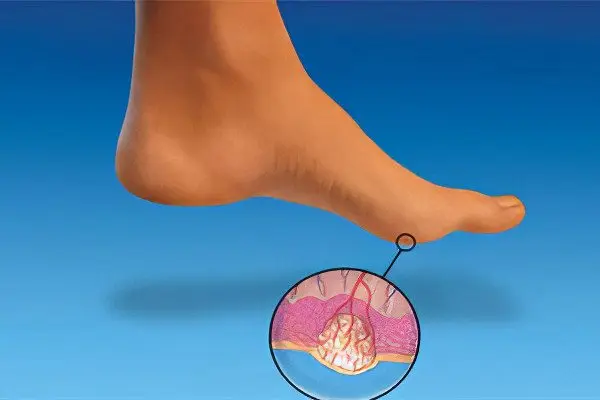
Plantar warts are benign neoplasms that look like small growths. The cause of their occurrence is HPV. According to various sources, from 70 to 90% of people are infected with the human papillomavirus. The place of localization of plantar warts is the supporting areas of the foot, or toes.
The average age of a patient with plantar warts is 20-30 years. At the same time, more than half of the warts go away on their own, without outside intervention.
Spines are the most common name for plantar warts. This term is often used in colloquial speech by ordinary people. Infection with strains of the human papillomavirus leads to the formation of skin growths.
Causes of plantar warts

A wart is a visible manifestation of HPV that a person is infected with. There are many strains of the virus – about 100. After entering the body, they may not manifest themselves for a long time. Their activity is inhibited by the human immune system, as well as phagocytosis. Phagocytosis is the body’s defense system that attacks and destroys invading pathogens.
The likelihood of infection increases in the following cases:
The virus is active.
The person is in direct contact with the virus.
Human immunity is weakened.
There are many carriers of the virus – about 90% of people. However, plantar papillomas do not appear in every person. It all depends on the state of the immune system. The risk of their occurrence increases when the human body is influenced by risk factors, including: emotional overstrain, overwork, non-compliance with personal hygiene rules, that is, all situations that lead to weakened immunity.
You can even get infected with the HPV virus by shaking hands with an infected person, or while using other people’s slippers or towels.
If we consider the risk factors in general, we can distinguish the following of them:
Foot hyperhidrosis. Increased sweating leads to loosening of the dermis, which facilitates the process of penetration of the virus into its deep structures.
Damage to the skin and mucous membranes with the formation of small cracks, abrasions and scratches on it. They are the entry gate for infection.
Uncomfortable shoes that rub the foot. Through abrasions and calluses, it is easy for the virus to penetrate into the deep structures of the skin.
Diseases that impair the nutrition of foot tissues, such as diabetes mellitus or atherosclerosis of the lower extremities.
Use of non-sterile nail tools.
A visit to the pool, sauna, bath – any place where the foot may come into contact with the contaminated floor surface.
Human skin is represented by several layers: epidermis, dermis and subcutaneous fat. HPV affects the epidermis – its basal layer. Reproducing, the cells of the virus penetrate into all layers of the skin. Outwardly, it looks as if the skin of the foot is coarsened.
What is HPV? HPV belongs to the family of papoviruses that can infect the mucous membranes of organs and epithelial cells of the skin. The virus has its own DNA, which invades human cells and causes them to produce new virus particles.
All strains of HPV are divided into 2 large groups:
With oncogenic properties, that is, those that can cause cancerous tumors.
No oncogenic potential.
The appearance of plantar warts causes the first type of HPV, but sometimes they can appear when the body is infected with types 2 and 4 HPV. These papillomaviruses are not oncogenic.
All people who are sexually active become infected with HPV. The most dangerous strains are strains numbered 6, 11, 16, 18. They can cause condylomas, papillomas and lead to their malignancy.
[Video] Cosmetologist Yuliana G. — Plantar warts, what is important to know?









